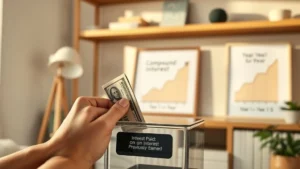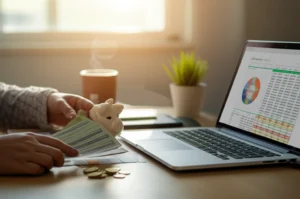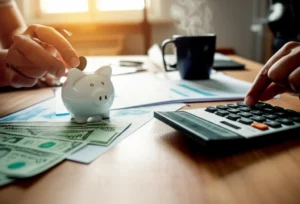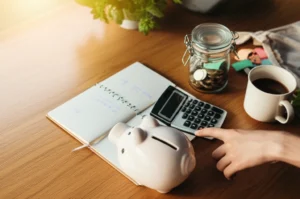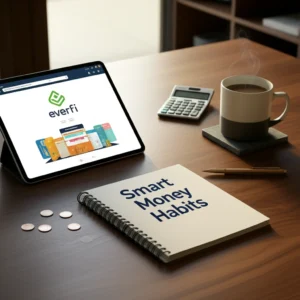Life’s “Oh No” Moments
Ever had one of those months where you told yourself, “This is it, I’m going to stay on budget,” only to wake up to a tire gone flat or your kid (or cat) deciding to swallow something they shouldn’t? Ugh. I’ve been there too—feeling like your budget gets sucker punched out of nowhere. These moments? They’re the reason an emergency fund matters—big time.
I didn’t always get it. Honestly, there was a time I figured I’d just “figure it out” if something bad happened. Credit card, maybe? Borrow from a friend? Sound familiar? Truth is, no matter how careful you are, life eventually lobs a curveball. And if you don’t have a backup plan that isn’t plastic, those curveballs turn into debt snowballs faster than you can say overdraft.
Surprises Happen…Then What?
Are You Truly Ready for a Shock?
Think about it: how would you handle a $900 car repair tomorrow? What if you lost your paycheck for a month? Most people I know… they’re one “uh-oh” away from panic. It’s not just you or me—data and research on spending habits say the same.
An emergency fund is like the seatbelt for your wallet—a little uncomfortable at first, maybe, but saves you from the really painful stuff. Having just a small buffer gives you wiggle room and peace of mind you can’t borrow.
A Real-Life Gut Punch
Let me share: I once thought I was cruising along…then my employer downsized. No warning, no magic severance. Thanks to the “baby” fund I had started, I covered rent. Didn’t love raiding my savings—but it beat explaining a bounced rent check to my landlord. A friend wasn’t so lucky: he ended up juggling three payday loans and a pile of late fees. Watching his stress, I promised myself: never again.
How Debt Slides In So Quietly
Here’s the part that sneaks up: When you don’t have a cash buffer, emergencies don’t pause. But debt? Debt is always right there, waving “pick me!” If you turn to credit for a crisis expense, it’s not just the original cost—you end up with interest, minimum payments, stress…and those sneaky charges. If you doubt it, If you make a late credit payment, you might see the lender add on unexpected fees. Been there, regretted that.
| Scenario | With Emergency Fund | Using Credit/No Fund |
|---|---|---|
| Car Repair ($1,000) | Pay, move on—no sweat. | Interest, late fees, plus stress—If you make a late credit payment, you might see the lender add penalties and your headache multiplies. |
| Lose Job (1 Month) | Bills are covered for a bit while you regroup. | Panic. Credit maxed, credit score tanks, more problems. |
| Your Sleep Quality | Decent—worry is lower. | Not great. Worry is your new roommate. |
Why Is This My #1 Money Move?
Okay, But Why Go Fund First?
You might be thinking, “Fine, sounds smart. But shouldn’t I focus on paying off my debt or investing first?” I get it. But honestly, making an emergency fund your first financial priority isn’t just some old-school advice. It’s the foundation—the floor beneath your feet.
Remember in the five foundations what is the third foundation? It’s literally about building that buffer before you dive into riskier stuff. No fund = shaky ground. And the experts—nerdy types and podcast hosts included—say shoot for 3–6 months of must-have expenses, but start with $500 or $1,000 if that feels more manageable. It’s the habit that counts first.
Three Reasons That Matter
Let’s keep it simple. The three reasons to save money are: for the “what ifs,” for future opportunities, and for peace… like, actual sleep-at-night peace. If your stomach tied in knots just thinking about bills, you’ll get it. Most emergencies are expensive enough without making your money future harder than it needs to be.
Interest Paid on Interest Previously Earned—Yes, Please
Little secret? If you stick your emergency savings in a high-interest account, it quietly grows. Not much at first… but over time? That’s interest paid on interest previously earned, or compounding, doing its thing. Even the smallest pile of savings earns you something while you sleep—almost like getting a high five from your future self.
I remember hitting my first $500 goal, watching that number tick up by a couple dollars in interest, and honestly… it was like magic. Tiny wins, but motivating ones!
Building It Without Overwhelm
If You’re Drowning in Debt—Should You Still Start?
This one trips people up. I get a lot of, “But shouldn’t I pay down my debt first?” Even some experts have debated this! Here’s what I learned: if you have no savings, a single “emergency” just lands you deeper in debt, or makes your lender happy with late fees. So yep, stashing even a baby emergency fund is key—even if it’s just $20 a week to start. Check out real stories from folks who got hit with a surprise bill—without any cushion, credit cards actually made things messier.
Once you’ve got, say, $1,000 in a safe spot, then you can ramp up debt payments. (And don’t forget, paying off high-interest debt always matters, but you don’t want to break the cycle. If you make a late credit payment, you might see the lender add on even more interest and fees—no fun.)
Insurance or Emergency Fund—Which First?
I used to think insurance was the answer to everything—until I needed something covered that didn’t fit the rules. Insurance handles big disasters (car totaled, broken arm), but emergencies aren’t always that dramatic. Sometimes it’s a busted phone screen right before payday, or having to go see family on last-minute notice.
Emergency funds are liquid—translation: cash you can use today, with no hassle. Insurance works great but isn’t instant. So… fund first, insurance as support. Both are key, but don’t skip the cash in your rainy day account.
How to Start—Small, Not Scary
Feeling Stuck? Try This
Let’s get real. Maybe you feel like you have no “extra” money. Most people don’t! But you can still make progress with baby steps. Here’s what worked for me and some thrift-loving friends:
- Add up your must-cover essentials (rent, food, utilities, kiddo stuff). Don’t include “wants”—just keep it honest.
- Aim for $500–$1,000 as a first goal. Feels smaller, right?
- Automate a tiny transfer each payday. Even $10 a week turns into $520 a year—trust me, you won’t miss it as much as you think.
- Stash the fund in a separate high-yield account (not your spending account!).
- Celebrate little wins. When you hit $100, $500… literally cheer. Text a friend, buy yourself a cheap coffee, or just smile at your bank app.
Consistency beats perfection—every time.
True Emergencies (vs. Just Wants)
Have you ever noticed some expenses just feel like emergencies… but aren’t? I almost dipped into my fund for a sale on boots (they were beautiful). Thankfully, I paused, sipped tea, and remembered the fund is for “life just punched me in the gut,” not “it’s cute and on sale.” My own rule: vet bills, lost income, roof leaks—okay. Concert tickets—nope.
Let It Grow—Interest Rocks
Making Your Fund Work For You
There’s a bit of thrill in seeing your savings grow on its own. When you park it in a high-yield account, you’re not just saving—you’re earning. That’s the quiet superpower of interest paid on interest previously earned. It won’t make you rich overnight, obviously, but over months and years? It adds up, and makes sticking to the fund feel rewarding. Like a mini bonus for doing the right thing.
I always tell friends: Just seeing it in action motivates you to keep going, even on stubborn months.
Final Thought—It’s Your Safety Net, Not Just Wishful Thinking
Here’s the deal. Why is it important to make an emergency fund your first financial priority? Because life happens, and you deserve a safety net. You work too hard for your money to see it slip away in a panic-fueled swipe of a credit card. This fund gives you time, space, and sanity. It gives future you better options. It keeps you from those late-night “uh-oh, how do I pay for this?” headaches. And hey, the more you save—even if it’s slow—the more your dollars have your back. Little by little, you get ahead, not behind.
No shame if you’re just starting or if you’ve had to drain it a few times—happens to the best of us. Just pick a number that’s doable, stash what you can, and protect it like a grumpy guard dog. Tomorrow’s surprises will still come, but you? You’ll be ready to handle what life throws your way—with a lot less stress and a whole lot more confidence.
Give it a shot this week: open a high-yield savings account, move $20, and call it your “Oh No” fund. Then, next payday, do it again. I promise, your future self will thank you—and who knows, maybe you’ll even sleep a little easier tonight.


